
Discovering Ancient Wonders in Bagan
Explore Bagan: A timeless wonderland of ancient temples and rich cultural heritage, offering mesmerizing sunrise views and vibrant local markets.
Bagan, nestled in the heart of Myanmar, is a land of ancient temples and timeless beauty. Known for its vast expanse of over 2,000 Buddhist monuments, Bagan offers a mesmerizing glimpse into the country's rich history. The city was once the capital of the Pagan Kingdom and remains one of the world's greatest archaeological sites. Start your journey by exploring the Ananda Temple, one of Bagan's most revered and well-preserved structures. Its golden spires and intricate carvings are sure to captivate any visitor. For a panoramic view of the temple-studded landscape, take a hot air balloon ride during sunrise or sunset. This unforgettable experience provides a unique perspective of Bagan's sprawling plains and the Irrawaddy River. Don't miss the chance to visit the bustling Nyaung U Market, where you can immerse yourself in local culture and sample traditional Burmese cuisine. The market is a vibrant hub of activity, offering everything from fresh produce to handcrafted souvenirs. Additionally, make time to visit the Shwezigon Pagoda, a stunning golden stupa that holds significant religious importance. For those interested in history, the Bagan Archaeological Museum provides a deeper understanding of the city's past. Here, you can find a collection of artifacts, sculptures, and ancient manuscripts. After a day of exploration, relax at one of the local tea houses, where you can enjoy a cup of Burmese tea and watch the world go by.
Local tips in Bagan
- Rent an e-bike for easy and eco-friendly travel between temples.
- Visit temples early in the morning or late afternoon to avoid the heat and crowds.
- Dress modestly when visiting religious sites; shoulders and knees should be covered.
- Carry cash, as many local vendors and smaller establishments do not accept credit cards.
- Try traditional Burmese breakfast dishes like mohinga (fish noodle soup) at local eateries.
Neighbourhoods in Bagan
Discovering Ancient Wonders in Bagan
Bagan, nestled in the heart of Myanmar, is a land of ancient temples and timeless beauty. Known for its vast expanse of over 2,000 Buddhist monuments, Bagan offers a mesmerizing glimpse into the country's rich history. The city was once the capital of the Pagan Kingdom and remains one of the world's greatest archaeological sites. Start your journey by exploring the Ananda Temple, one of Bagan's most revered and well-preserved structures. Its golden spires and intricate carvings are sure to captivate any visitor. For a panoramic view of the temple-studded landscape, take a hot air balloon ride during sunrise or sunset. This unforgettable experience provides a unique perspective of Bagan's sprawling plains and the Irrawaddy River. Don't miss the chance to visit the bustling Nyaung U Market, where you can immerse yourself in local culture and sample traditional Burmese cuisine. The market is a vibrant hub of activity, offering everything from fresh produce to handcrafted souvenirs. Additionally, make time to visit the Shwezigon Pagoda, a stunning golden stupa that holds significant religious importance. For those interested in history, the Bagan Archaeological Museum provides a deeper understanding of the city's past. Here, you can find a collection of artifacts, sculptures, and ancient manuscripts. After a day of exploration, relax at one of the local tea houses, where you can enjoy a cup of Burmese tea and watch the world go by.
When is the best time to go to Bagan?
Iconic landmarks you can’t miss
Shwezigon Pagoda
Discover the spiritual beauty of Shwezigon Pagoda, a stunning Buddhist temple in Nyaung-U, Myanmar, rich in history and cultural significance.

Ananda Temple
Explore Ananda Temple, a breathtaking Buddhist temple in Bagan, Myanmar, known for its stunning architecture and rich spiritual heritage.

Dhammayangyi Temple
Discover the architectural grandeur and spiritual serenity of Dhammayangyi Temple in the heart of Old Bagan, a must-see for every traveler.
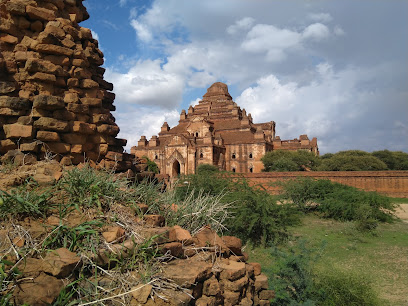
Bupaya
Discover the rich history and breathtaking sunsets at Bupaya Pagoda, a cherished landmark in Old Bagan, Myanmar.
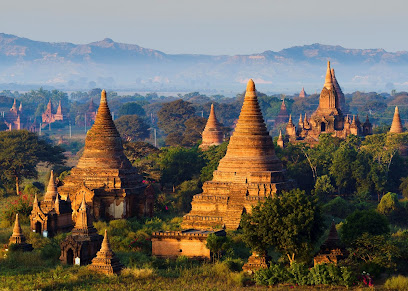
Bagan Viewing Tower (Bagan Nan Myint Tower)
Experience breathtaking panoramic views of Bagan's ancient temples and landscapes from the Bagan Viewing Tower.

That Bin Nyu Temple
Explore the stunning That Bin Nyu Temple in Old Bagan, a captivating Buddhist temple showcasing unique architecture and rich cultural history.

Lawkananda Pagoda
Experience the beauty and tranquility of Lawkananda Pagoda, a stunning jewel of New Bagan, where spirituality meets breathtaking landscapes.
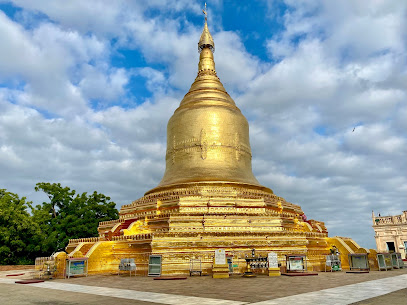
Htilominlo Pahto
Explore Htilominlo Pahto, a captivating Buddhist temple in Nyaung-U, showcasing stunning architecture and deep spiritual significance amidst Myanmar's rich heritage.

Weather Spoon's Restaurant and Bar
Experience authentic Myanmar cuisine and vibrant social atmosphere at Weather Spoon's Restaurant and Bar in Nyaung-U.
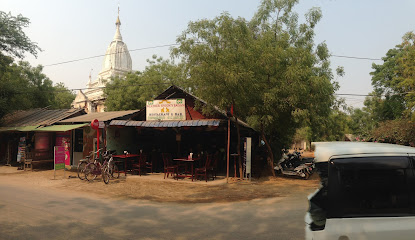
Shwesandaw Pagoda
Explore the enchanting Shwesandaw Pagoda in Old Bagan, a UNESCO World Heritage site, and witness stunning views of ancient temples and breathtaking sunsets.
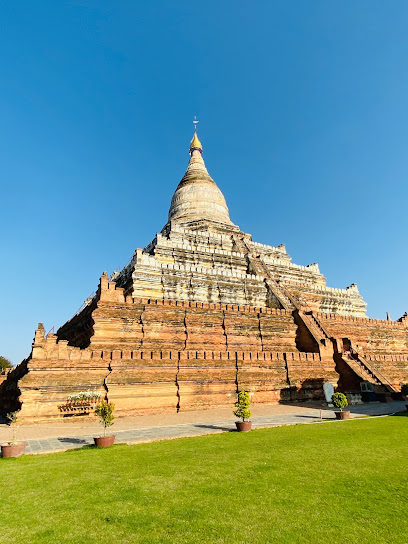
Mani Sithu Market
Explore Mani Sithu Market in Nyaung-U for an authentic taste of Burmese culture, local crafts, and delectable street food in a vibrant market setting.

Sulamani Temple
Explore the ancient beauty of Sulamani Temple, a breathtaking Buddhist sanctuary in Nyaung-U, showcasing Myanmar's rich architectural heritage.
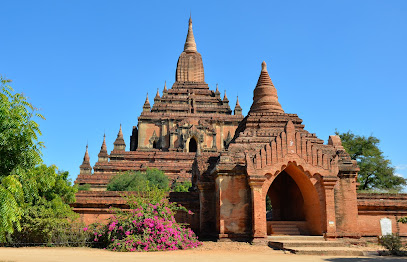
Manuha Temple
Explore the serene and historic Manuha Temple in Myin Ka Bar, a stunning representation of ancient Buddhist architecture and spirituality.
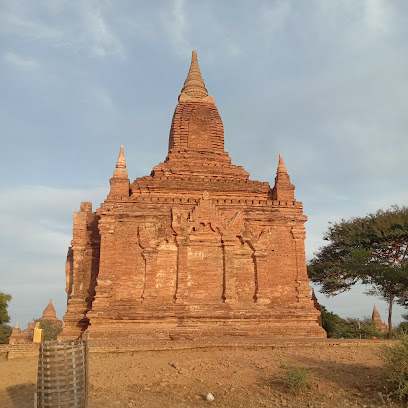
Dhammayazaka Pagoda
Explore the Dhammayazaka Pagoda in Thuntekan, a stunning example of Myanmar's architectural beauty and spiritual depth, perfect for a serene getaway.
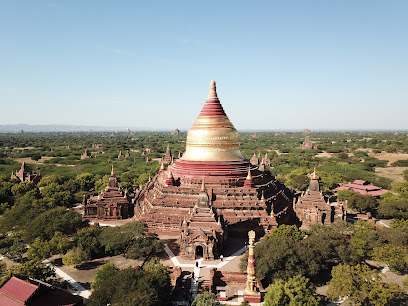
Bagan Archaeological Museum
Discover the ancient treasures of Myanmar at the Bagan Archaeological Museum, a cultural gem in the heart of Old Bagan.
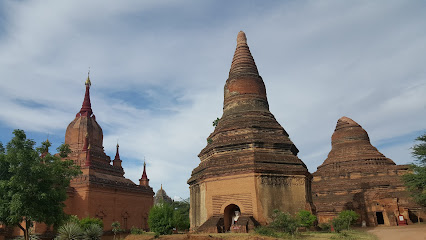
Unmissable attractions to see
Shwezigon Pagoda
Experience the spiritual grandeur of Shwezigon Pagoda, a breathtaking symbol of Myanmar's rich Buddhist heritage in Nyaung-U.
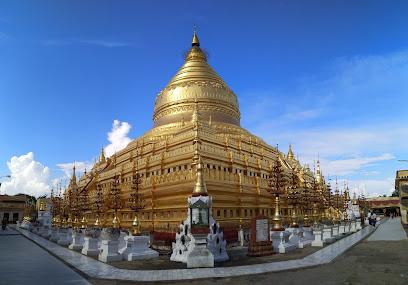
Ananda Temple
Discover the enchanting Ananda Temple in Bagan, a breathtaking fusion of art, architecture, and spirituality in the heart of Myanmar.
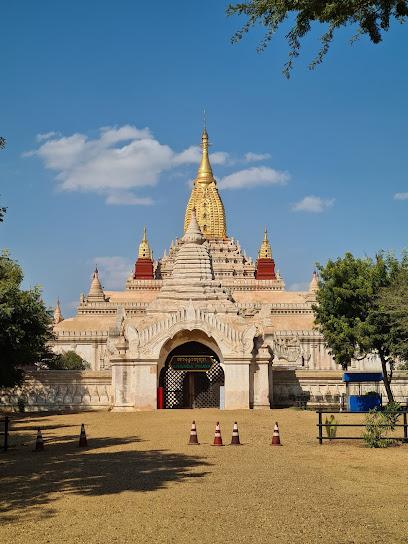
Dhammayangyi Temple
Discover the Dhammayangyi Temple in Old Bagan, an architectural marvel steeped in history and spirituality amidst Myanmar's breathtaking landscapes.

Bagan Viewing Tower (Bagan Nan Myint Tower)
Experience breathtaking views of the Bagan archaeological zone from the iconic Bagan Viewing Tower, a must-visit tourist attraction in Myanmar.
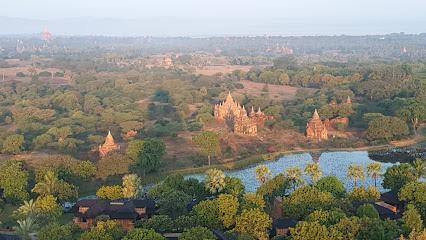
Bupaya
Explore the breathtaking Bupaya Pagoda, an ancient gem in Old Bagan, offering stunning views and deep cultural significance.
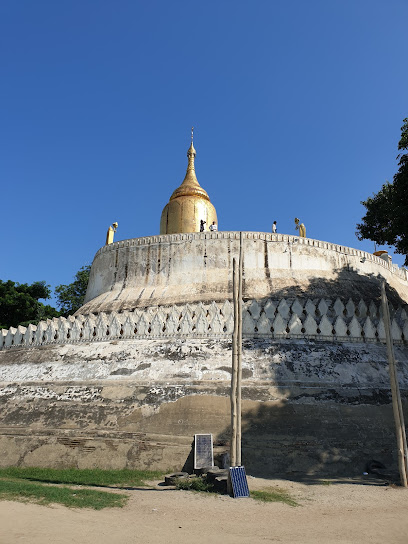
Htilominlo Pahto
Explore the stunning Htilominlo Pahto, a breathtaking Buddhist temple in Nyaung-U, Myanmar, rich in history and architectural beauty.
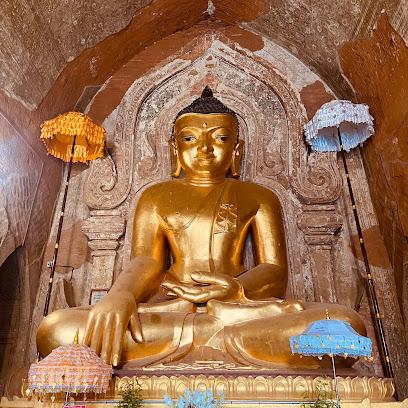
Sulamani Temple
Explore the stunning Sulamani Temple in Nyaung-U, a masterpiece of ancient architecture nestled in the breathtaking landscapes of Bagan, Myanmar.
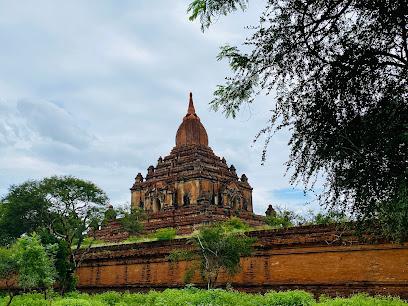
Manuha Temple
Discover the beauty and spirituality of Manuha Temple in Myin Ka Bar, a stunning Buddhist site rich in history and cultural significance.
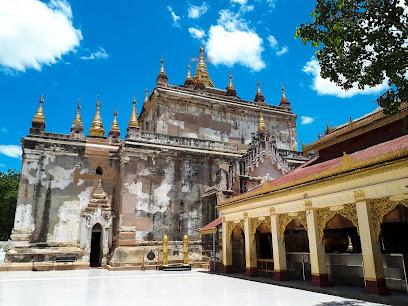
Dhammayazaka Pagoda
Explore the stunning Dhammayazaka Pagoda, a serene gem in Thuntekan, Myanmar, showcasing exquisite architecture and a rich spiritual heritage.
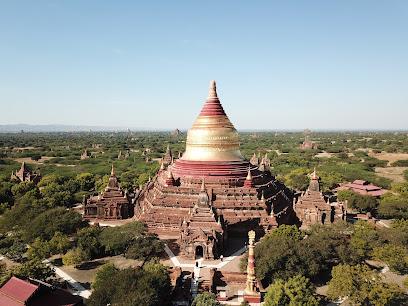
Bagan Archaeological Museum
Discover the rich history of Bagan at the Archaeological Museum, home to ancient artifacts and stunning displays of Myanmar's cultural heritage.
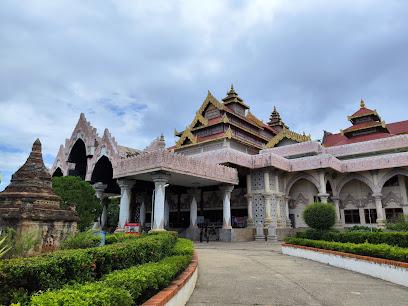
Bagan Golden Palace
Discover the grandeur of Bagan Golden Palace, a historical landmark that showcases Myanmar's royal heritage and stunning architectural brilliance.
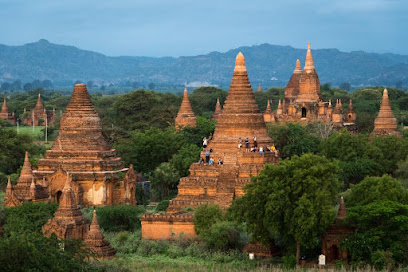
Gu Byauk Gyi Myin Kabar
Explore the serene beauty of Gu Byauk Gyi Myin Kabar, a captivating Buddhist temple in Myin Ka Bar, Myanmar, rich in culture and spirituality.
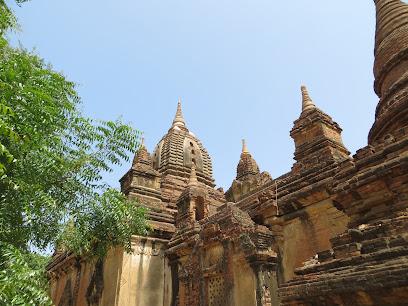
Gawdawpalin Temple
Discover the majestic Gawdawpalin Temple in Old Bagan, a stunning Buddhist site showcasing rich history, exquisite architecture, and breathtaking views.
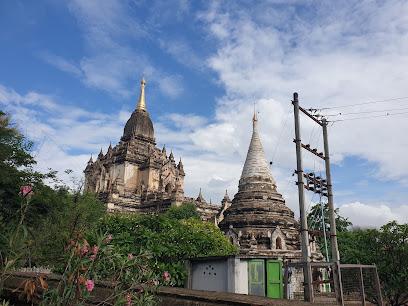
Mt Popa
Discover the breathtaking landscapes and spiritual heritage of Mt. Popa, Myanmar's iconic dormant volcano surrounded by vibrant culture.
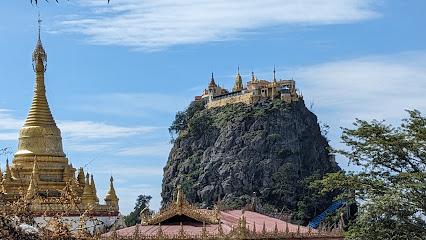
Tant Kyi Swel Taw
Explore the tranquil beauty and spiritual essence of Tant Kyi Swel Taw, a stunning pagoda nestled in the serene landscapes of Yananchat, Myanmar.
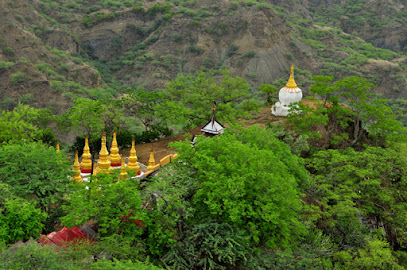
Essential places to dine
The Moon Vegetarian Restaurant
Discover delectable vegetarian cuisine at The Moon Vegetarian Restaurant in Taungbi – where flavor meets sustainability!
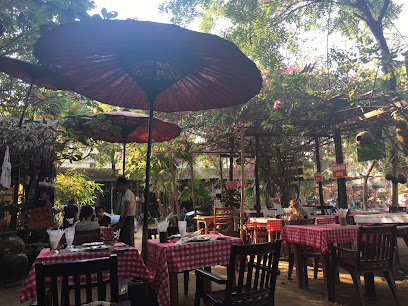
Star Beam
Experience authentic Burmese cuisine at Star Beam in New Bagan - where tradition meets flavor in a welcoming atmosphere.
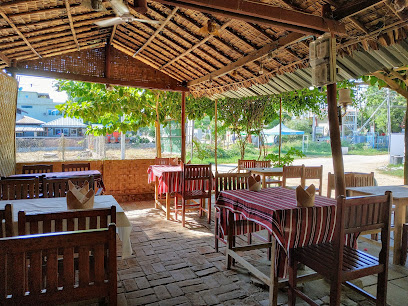
Khaing Shwe Wha Vegetarian Restaurant ခိုင်ရွှေဝါ(သားသတ်လွတ်စားသောက်ဆိုင်)
Discover delightful vegetarian cuisine at Khaing Shwe Wha Vegetarian Restaurant in Nyaung-U – where flavor meets health in every bite.

Elodie Restaurant
Experience authentic Burmese cuisine at Elodie Restaurant in New Bagan – where every dish tells a story.
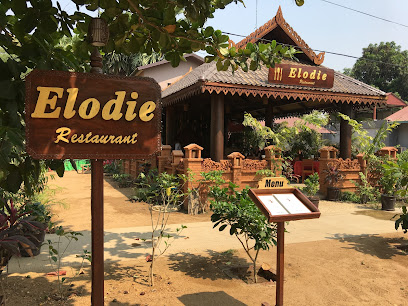
San Thi Dar
Experience authentic Burmese cuisine at San Thi Dar in Myin Ka Bar – where every dish tells a story of Myanmar's rich culinary heritage.
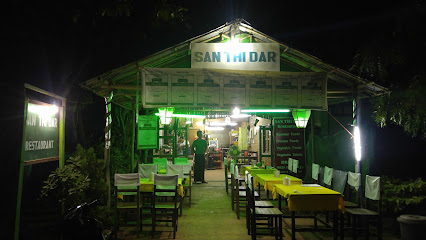
Delicious restaurant
Experience authentic Burmese cuisine at Delicious Restaurant in New Bagan - where flavor meets affordability!

Golden Myanmar 2 Restaurant
Discover authentic Burmese cuisine at Golden Myanmar 2 Restaurant - where every dish tells a story.
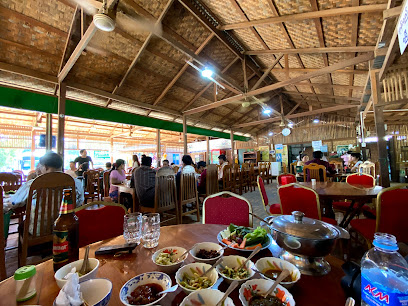
Treasure Cafe & Restaurant (ဒေါင်းလန်းကြီး ထမင်းဆိုင်)
Discover authentic Burmese flavors and international delights at Treasure Cafe & Restaurant in Nyaung-U.

Kyaw Kitchen
Discover the authentic taste of Myanmar at Kyaw Kitchen in New Bagan – a delightful culinary journey awaits!
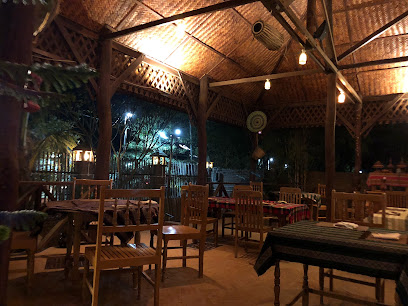
Royal restaurant
Experience authentic Burmese flavors at Royal Restaurant in New Bagan - where every dish tells a story.
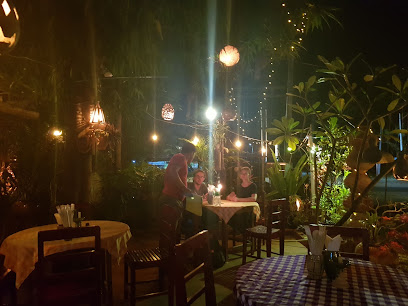
Tharabar Three Myanmar Curry (သရပါသရီး)
Discover authentic Burmese flavors at Tharabar Three Myanmar Curry in Nyaung-U - where every dish tells a story.
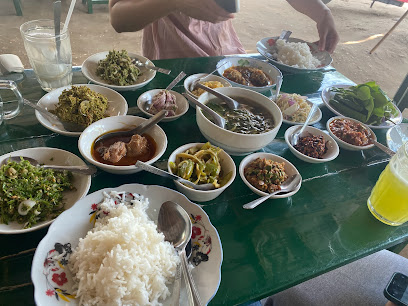
The Little Thai Kitchen
Experience authentic Thai cuisine at The Little Thai Kitchen in Old Bagan—where delicious food meets warm hospitality.
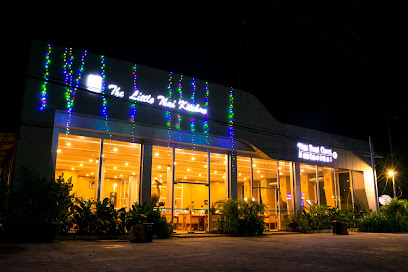
Mi San Restaurant
Discover the authentic taste of Myanmar at Mi San Restaurant in Old Bagan, where traditional flavors meet warm hospitality.
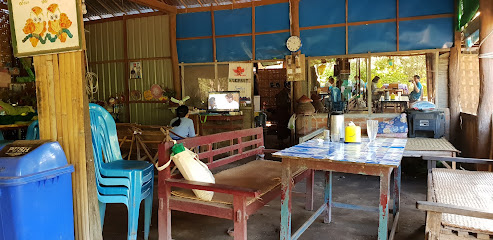
ရွှေတမာ မြန်မာထမင်းဆိုင်
Indulge in authentic Burmese flavors at ရွှေတမာ မြန်မာထမင်းဆိုင်, where every dish tells a story of Myanmar's rich culinary heritage.

Shwe Myanmar
Experience the vibrant flavors of Burmese cuisine at Shwe Myanmar – an all-you-can-eat buffet paradise in Nyaung-U.
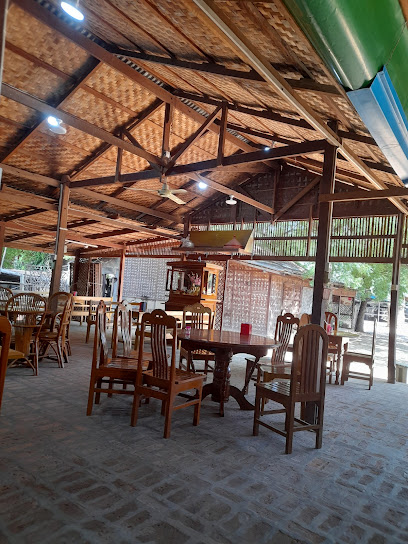
Markets, malls and hidden boutiques
ပုဂံအိမ်
Explore Bagan House in New Bagan for unique gifts and authentic Myanmar handicrafts that capture the spirit of the region.

Jasmine Family Lacquerware Workshop
Discover the intricate art of lacquerware at Jasmine Family Lacquerware Workshop in Old Bagan, where tradition meets craftsmanship.
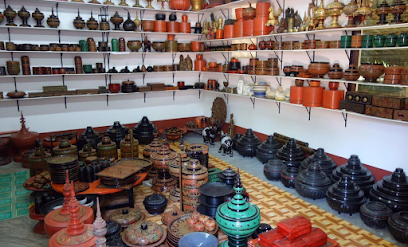
Golden Cuckoo Lacquerware
Explore the rich tradition of Burmese lacquerware at Golden Cuckoo Lacquerware, a vibrant gift shop in Myin Ka Bar that showcases exquisite craftsmanship.
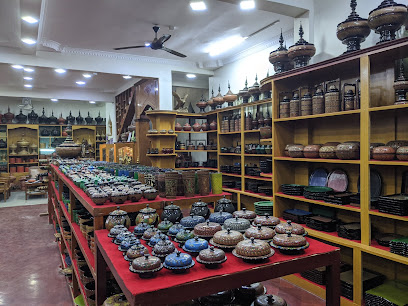
MBoutik Handicraft Shop
Explore the rich craftsmanship of Myanmar at MBoutik Handicraft Shop in New Bagan; a unique destination for authentic handicrafts and home goods.
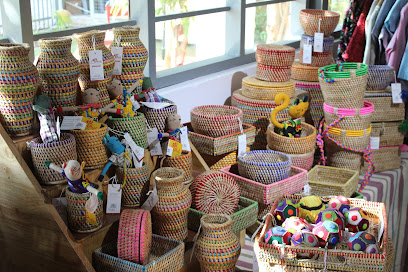
The Lotus Collection Lacquer Ware Factory
Explore the exquisite craftsmanship of lacquer ware at The Lotus Collection in New Bagan, a unique gift shop showcasing Myanmar's rich artistic tradition.
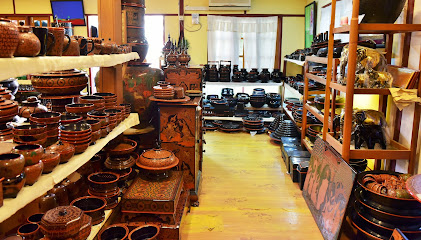
Royal Peacock Lacquerware Workshop
Discover the exquisite craftsmanship of lacquerware at Royal Peacock Lacquerware Workshop in New Bagan, where tradition meets artistry.
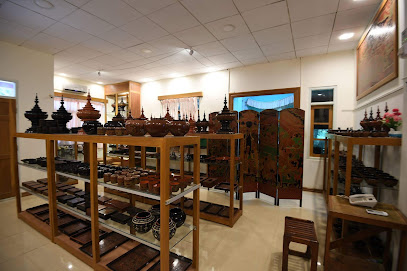
Street Market by Ananda Temple
Discover the cultural richness and culinary delights at the lively Street Market by Ananda Temple in Nyaung-U, Myanmar.
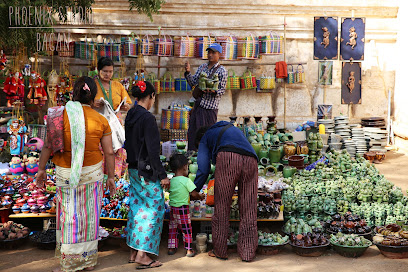
Pandora Lacquerware Workshop
Explore the exquisite craftsmanship of Burmese lacquerware at Pandora Lacquerware Workshop in New Bagan, a must-visit for art lovers and souvenir hunters.
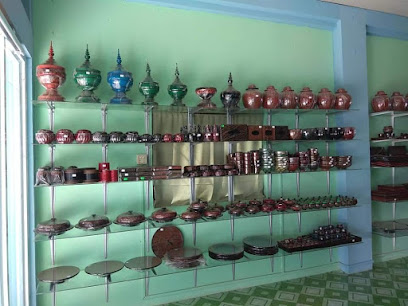
Crown Prince Tuk Tuk Bagan
Discover the enchanting Bagan with Crown Prince Tuk Tuk - your gateway to unforgettable adventures and authentic souvenirs.
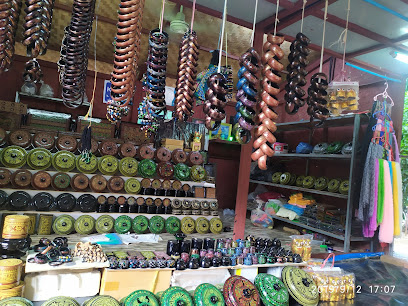
Royal Golden Tortoise Lacquerware
Explore the exquisite craftsmanship of lacquerware at Royal Golden Tortoise in New Bagan, where culture meets artistry in unique gifts.
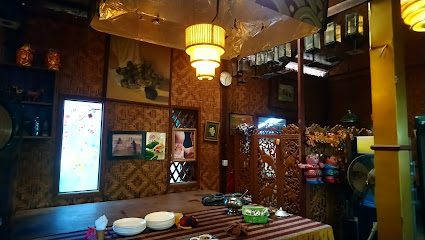
Shwe Moe Souvenir Shop
Explore the vibrant Shwe Moe Souvenir Shop in New Bagan, where authentic local crafts and unique treasures await every traveler.
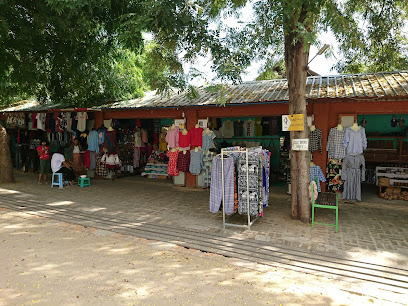
Shwe Wah Thein - Myanmar Handicraft Shop
Experience the beauty of Myanmar's craftsmanship at Shwe Wah Thein, where traditional clothing meets vibrant culture in Nyaung-U.

Win family lacquerware shop
Explore the artistic heritage of Myanmar at Win Family Lacquerware Shop, where traditional craftsmanship meets exquisite design in Bagan.
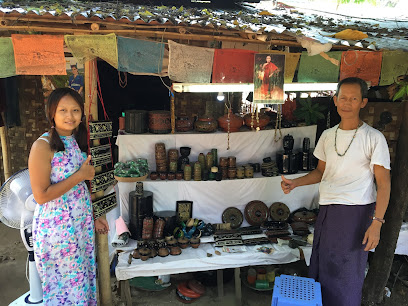
Golden Bagan Lacquerware Shop
Explore the exquisite craftsmanship of lacquerware at Golden Bagan, a unique gift shop in New Bagan showcasing traditional Burmese artistry.

ပြည့်ရှင်မင်းယွန်းထည်-PYAE SHIM MIN Lacquerware Shop
Discover the artistry of traditional Burmese lacquerware at PYAE SHIM MIN Lacquerware Shop in New Bagan, a true cultural experience.
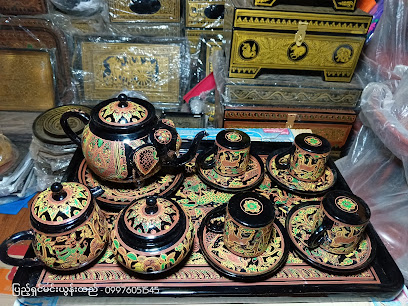
Essential bars & hidden hideouts
HTI Bar & Restaurant
Discover the lively HTI Bar & Restaurant in Nyaung-U, where delicious food meets innovative cocktails in a vibrant atmosphere.
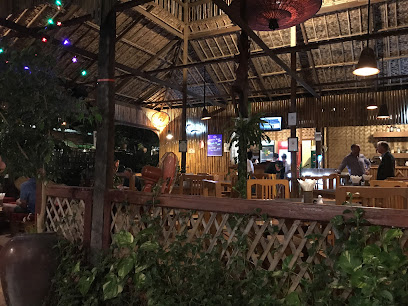
Bagan Zay
Discover Bagan Zay, a lively bar in Nyaung-U offering a diverse drink menu and a welcoming atmosphere for tourists exploring the wonders of Bagan.
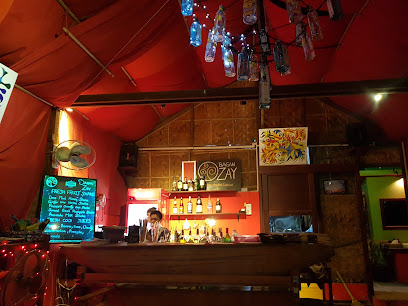
Erawati Raft
Experience the enchanting beauty of Old Bagan at Erawati Raft, a riverside bar where local flavors and stunning views come together.
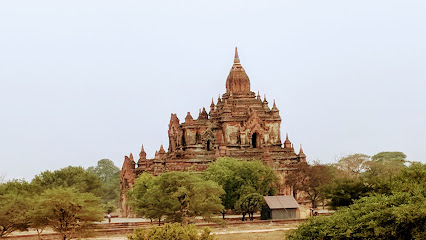
Mi San Restaurant
Experience the authentic flavors of Myanmar at Mi San Restaurant in Old Bagan, where traditional cuisine meets a welcoming atmosphere.

အညာထန်းရိပ်
Discover the lively nightlife of New Bagan at အညာထန်းရိပ်, where unique cocktails meet a vibrant atmosphere surrounded by local charm.

FOCUS Restaurant
Discover the charm of FOCUS Restaurant, a delightful bar in Nyaung-U offering refreshing drinks and a cozy atmosphere for travelers.
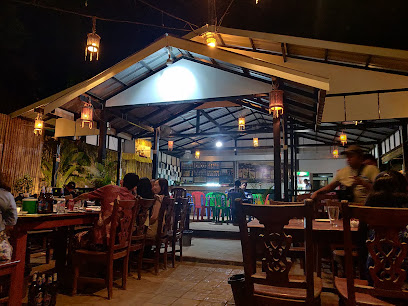
Royal Restaurant
Experience the authentic flavors of Myanmar at Royal Restaurant in Old Bagan, where tradition meets culinary excellence in a charming setting.
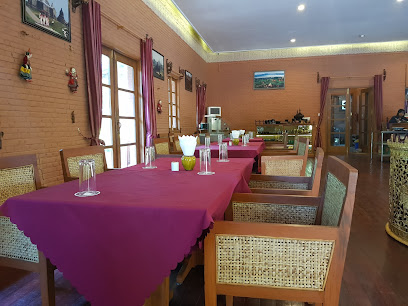
Restaurant at Bagan Ostello Bello
Experience the vibrant flavors of Myanmar at the Restaurant at Bagan Ostello Bello, a culinary gem in the heart of New Bagan.
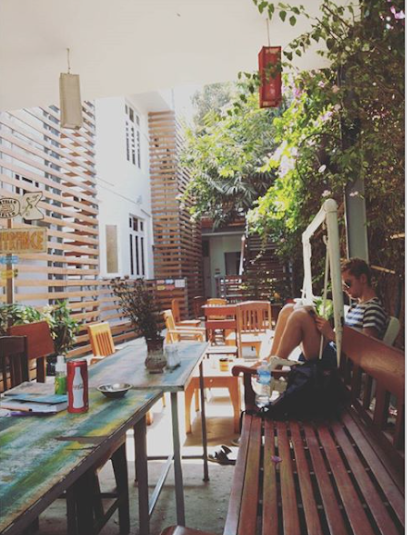
best stick pork shop
Experience the savory delights of Old Bagan with mouthwatering pork skewers at the Best Stick Pork Shop, a culinary gem in Myanmar.
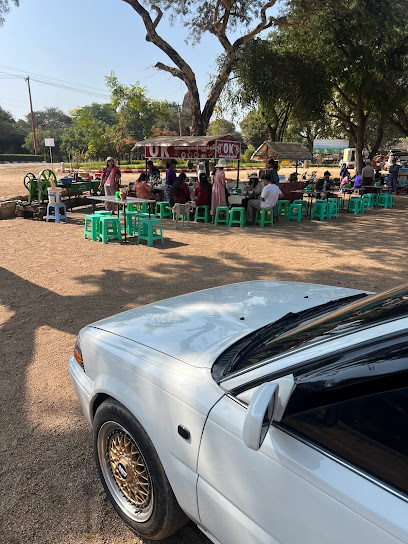
Acacia Shade Restaurant
Experience the authentic tastes of Asia at Acacia Shade Restaurant in Old Bagan, where every dish tells a story of local culture and tradition.
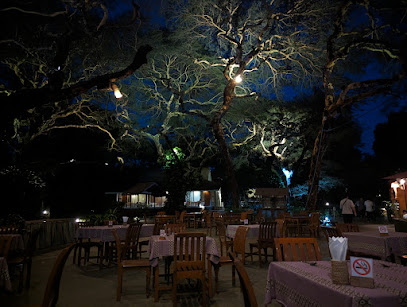
Active Bar BBQ & Restaurant
Experience the vibrant flavors of New Bagan at Active Bar BBQ & Restaurant, where mouthwatering grilled dishes meet a lively atmosphere.
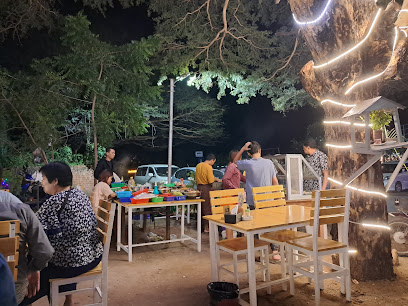
Bagan Beach Food Garden
Experience the culinary delights of Bagan Beach Food Garden in Old Bagan with a menu that celebrates Asian flavors and local ingredients.
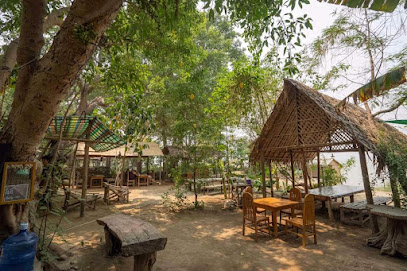
Bagan Thu ထန်းရည်စစ်စစ်
Savor the authentic flavors of Burma at Bagan Thu, a unique bar in Nyaung-U offering traditional drinks in a cozy atmosphere.
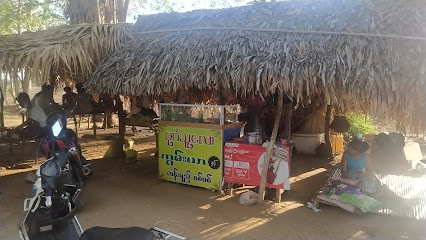
Thu zar night club
Discover delicious grilled cuisine and an energetic nightlife at Thu Zar Night Club in Nyaung-U, Myanmar.

wai
Discover the tranquil charm of Wai, a serene bar in Old Bagan offering a delightful selection of beverages and a relaxing atmosphere.

Local Phrases
-
- Helloမင်္ဂလာပါ
[mingalarbar] - Goodbyeသွားပါ
[thwa ba] - Yesဟုတ်ပါတယ်
[hote par tal] - Noမဟုတ်ပါ
[ma hote par] - Please/You're welcomeကျေးဇူးတင်ပါတယ်
[chay zu tin ba tal] - Thank youကျေးဇူးပါတယ်
[chay zu ba tal] - Excuse me/Sorryခွင့်ပါတယ်
[kwin ba tal] - How are you?ဘယ်သူ့ကိုယ်သူ့ကိုယ်ဘယ်သာလား
[be thwar ko su thwar ko be thalarr] - Fine. And you?ကျေးဇူးပါတယ်။ နင့်ဘယ်သူ့လား
[chay zu ba tal. nang be thwar lar] - Do you speak English?အဂၤလိပ်မဲ့သူ့ကိုယ်ရာလို့
[egale mae su ko yar loe] - I don't understandကျေးဇူးထားပါတယ်
[chay zu tar ba tal]
- Helloမင်္ဂလာပါ
-
- I'd like to see the menu, pleaseမီနူးကြောင်းကြာရှိရင်တောင်းပါတယ်
[menu kyar go yar nae tot ngo ba tal] - I don't eat meatဟမ်းမဖော်ပါတယ်
[hman ma pe ba tal] - Cheers!စေးသွား
[se thwa] - I would like to pay, pleaseစျေးဝယ်ဘူးပါတယ်
[se yae bu ba tal]
- I'd like to see the menu, pleaseမီနူးကြောင်းကြာရှိရင်တောင်းပါတယ်
-
- Help!အင်းအဝေး
[in awe] - Go away!ကြားပါ
[kwa ba] - Call the Police!ရုံးလိုင်းပါ
[yon loe nying ba] - Call a doctor!ဆရာဝန်ပါ
[sha ya wan ba] - I'm lostခြောက်တယ်
[hauk tal] - I'm illနှင့်အားလုံးတယ်
[ning a lone tal]
- Help!အင်းအဝေး
-
- I'd like to buy...ဝယ်ယူပါတယ်
[yae yu ba tal] - I'm just lookingကြည့်ရင်းပူတယ်
[chin yar nae pu tal] - How much is it?ဘယ်ဘက်လို့
[be ba loe] - That's too expensiveဒီလို့ချိုင်းရင်ခွင့်ပါတယ်
[di loe choung na kwin ba tal] - Can you lower the price?စစ်ထဲ့နိုင်းလို့
[sat te nying loe]
- I'd like to buy...ဝယ်ယူပါတယ်
-
- What time is it?ဘယ်နာရီလို့
[be na ri loe] - It's one o'clockတစ်နာရီ
[tit na ri] - Half past (10)ရှေ့ ဆယ် နာရီ
[se shi tit na ri] - Morningနန်းတောင်း
[nam taung] - Afternoonနေ့လုံး
[ne lone] - Eveningနော်စန်
[nao san] - Yesterdayမနေ့
[ma ne] - Todayယနေ့
[ya ne] - Tomorrowမနက်ဖြန်း
[ma ne prawn] - 1တစ်
[tit] - 2နှစ်
[hna] - 3သုံး
[saun] - 4လေး
[lay] - 5ငါး
[nga] - 6ခြောက်
[hauk] - 7ခွေး
[khwe] - 8ရှစ်
[she] - 9ကိုး
[ko] - 10ဆယ်
[shi]
- What time is it?ဘယ်နာရီလို့
-
- Where's a/the...?ဘာလေးနဲ့...ဆယ်လို့
[ba lei ne ... shi loe] - What's the address?လိပ်စာဆယ်လို့
[le sa shi loe] - Can you show me (on the map)?ဒီမြို့နဲ့ကြည့်နိုင်းလို့
[di mwe ne chin nying loe] - When's the next (bus)?နော်လို့သော...ဆယ်လို့
[nao loe sau ... shi loe] - A ticket (to ....)လက်မှတ်ကြွယ်လို့
[lak mat kway loe]
- Where's a/the...?ဘာလေးနဲ့...ဆယ်လို့
History of Bagan
-
According to local legends and historical records, Bagan was founded in the mid-9th century by King Pyinbya. It began as a small fortified city on the banks of the Irrawaddy River and quickly grew into a significant political and cultural center. The establishment of Bagan marked the beginning of the Bagan Kingdom, which would dominate the region for several centuries.
-
King Anawrahta, who ruled from 1044 to 1077, is often credited with unifying Myanmar and transforming Bagan into a major center of Theravada Buddhism. Anawrahta's reign was marked by numerous military campaigns that expanded the kingdom's territory. He also initiated a series of religious and cultural reforms, including the construction of many of Bagan's most iconic temples and pagodas, such as the Shwezigon Pagoda.
-
The period from the 11th to the 13th centuries is considered the Golden Age of Bagan. During this time, the city became a thriving hub of commerce, culture, and religion. Thousands of stupas, temples, and monasteries were constructed, showcasing the architectural and artistic achievements of the Bagan civilization. This era also saw a flourishing of literature, with many religious texts being transcribed onto palm leaves.
-
In 1287, Bagan faced a significant threat from the Mongol Empire. The invasion, led by Kublai Khan's forces, resulted in the sacking of the city and the eventual decline of the Bagan Kingdom. While the Mongols did not occupy Bagan for long, their invasion disrupted the political and economic stability of the region, leading to the fragmentation of the kingdom into smaller states.
-
For centuries, Bagan remained largely forgotten and neglected, with many of its temples falling into disrepair. However, in the 19th century, renewed interest in the site emerged during the British colonial period. Archaeologists and historians began to document and study the ruins, leading to a gradual restoration effort. Today, Bagan is recognized as one of the most important archaeological sites in Southeast Asia and was designated a UNESCO World Heritage Site in 2019.
Bagan Essentials
-
Bagan is accessible by air, road, and river. The nearest airport is Nyaung U Airport, which has regular domestic flights from major cities like Yangon and Mandalay. You can also take an overnight bus or private car from Yangon or Mandalay, which takes approximately 9-10 hours and 4-5 hours respectively. For a more scenic route, consider taking a river cruise on the Ayeyarwady River from Mandalay to Bagan.
-
Once in Bagan, you have several options for getting around. E-bikes are a popular choice for tourists, offering a convenient and eco-friendly way to explore the area. You can also rent bicycles, hire a private car with a driver, or take a horse cart for a more traditional experience. Taxis are available but may be more expensive. Public buses are limited, so renting a vehicle or bike is recommended.
-
The official currency in Myanmar is the Myanmar Kyat (MMK). While some hotels and high-end restaurants accept credit cards, most local establishments prefer cash. ATMs are available in Nyaung U and some major hotels, but it is advisable to carry enough cash for day-to-day expenses. Currency exchange services are available at the airport and in major towns.
-
Bagan is generally safe for tourists, but standard precautions should be taken. Avoid walking alone at night in poorly lit areas and keep your belongings secure in crowded places. There are no specific high-crime areas targeting tourists, but it is always best to stay vigilant. Be cautious of pickpockets in busy tourist spots and markets.
-
In case of emergency, dial 199 for police assistance and 192 for medical emergencies. The closest hospital is Nyaung U Hospital, which is equipped to handle basic medical issues. For more serious conditions, you may need to travel to Mandalay or Yangon. It is highly recommended to have travel insurance that covers medical emergencies.
-
Fashion: Do dress modestly, especially when visiting temples and pagodas. Avoid wearing revealing clothing. Religion: Do remove your shoes and socks before entering religious sites. Be respectful and avoid touching religious artifacts. Public Transport: Do be polite and give up your seat to elderly passengers. Don't eat or drink on public transport. Greetings: Do greet people with a slight bow or a traditional 'Mingalaba'. Avoid touching people on the head. Eating & Drinking: Do try local dishes and accept food offerings graciously. Don't refuse hospitality, as it may be considered impolite.
-
To experience Bagan like a local, visit the morning markets in Nyaung U where you can buy fresh produce and traditional Burmese goods. Engage with locals, as they are often friendly and willing to share stories about their culture and history. Don't miss the opportunity to watch the sunrise or sunset from one of the pagodas for a truly magical experience. For an authentic taste of local cuisine, try the traditional Burmese breakfast dish 'Mohinga'.
Trending Landmark in Bagan
-
Shwezigon Pagoda
-
Ananda Temple
-
Dhammayangyi Temple
-
Bupaya
-
Bagan Viewing Tower (Bagan Nan Myint Tower)
-
That Bin Nyu Temple
-
Lawkananda Pagoda
-
Htilominlo Pahto
-
Weather Spoon's Restaurant and Bar
-
Shwesandaw Pagoda
-
Mani Sithu Market
-
Sulamani Temple
-
Manuha Temple
-
Dhammayazaka Pagoda
-
Bagan Archaeological Museum
Nearby Cities to Bagan
-
Things To Do in Mandalay
-
Things To Do in Mrauk U
-
Things To Do in Kalaw
-
Things To Do in Pyin Oo Lwin
-
Things To Do in Naypyidaw
-
Things To Do in Inle Lake
-
Things To Do in Sittwe
-
Things To Do in Pyay
-
Things To Do in Cox's Bazar
-
Things To Do in Ngapali
-
Things To Do in Chittagong
-
Things To Do in Aizawl
-
Things To Do in Mae Hong Son
-
Things To Do in Imphal
-
Things To Do in Pai
















